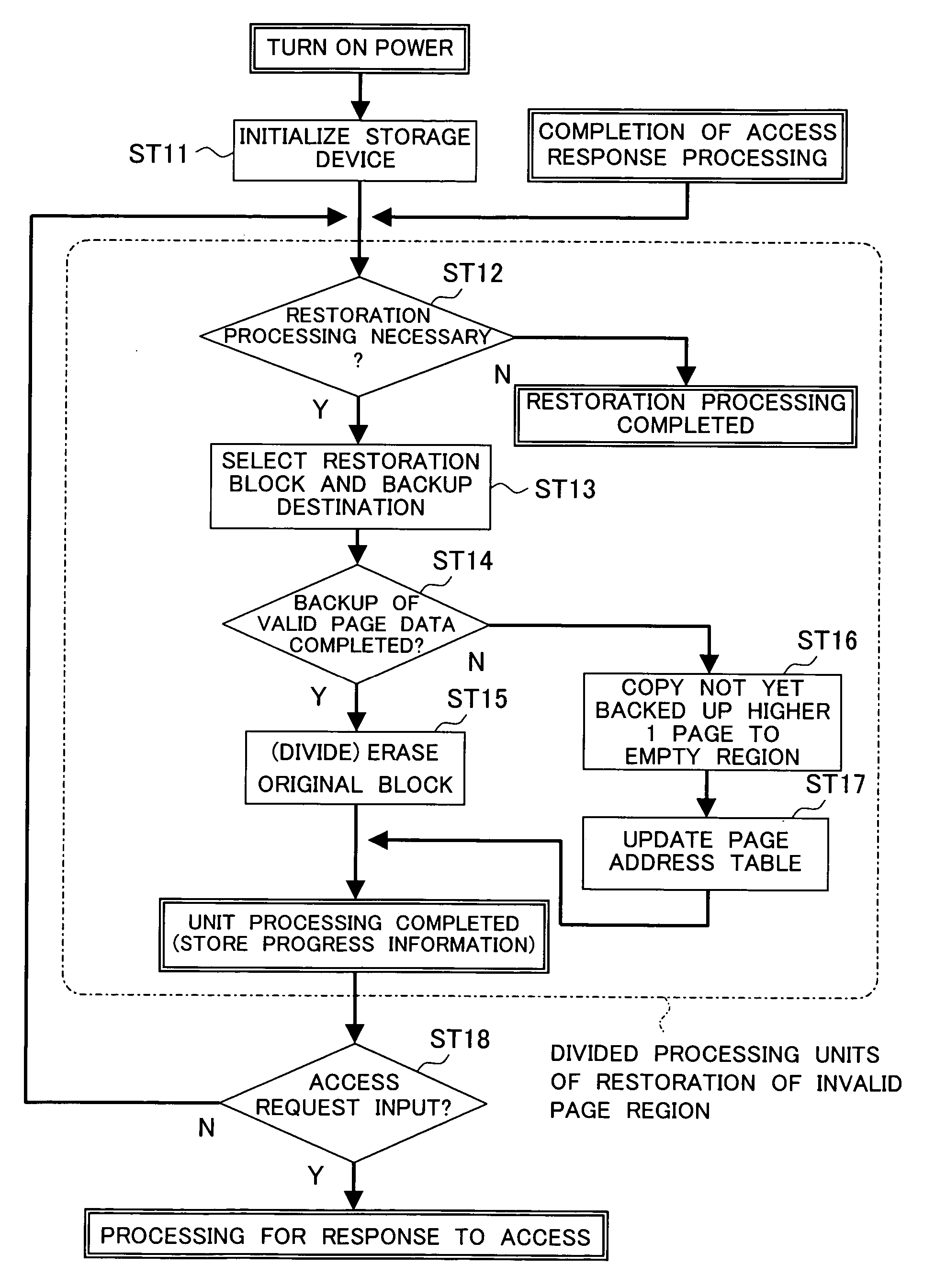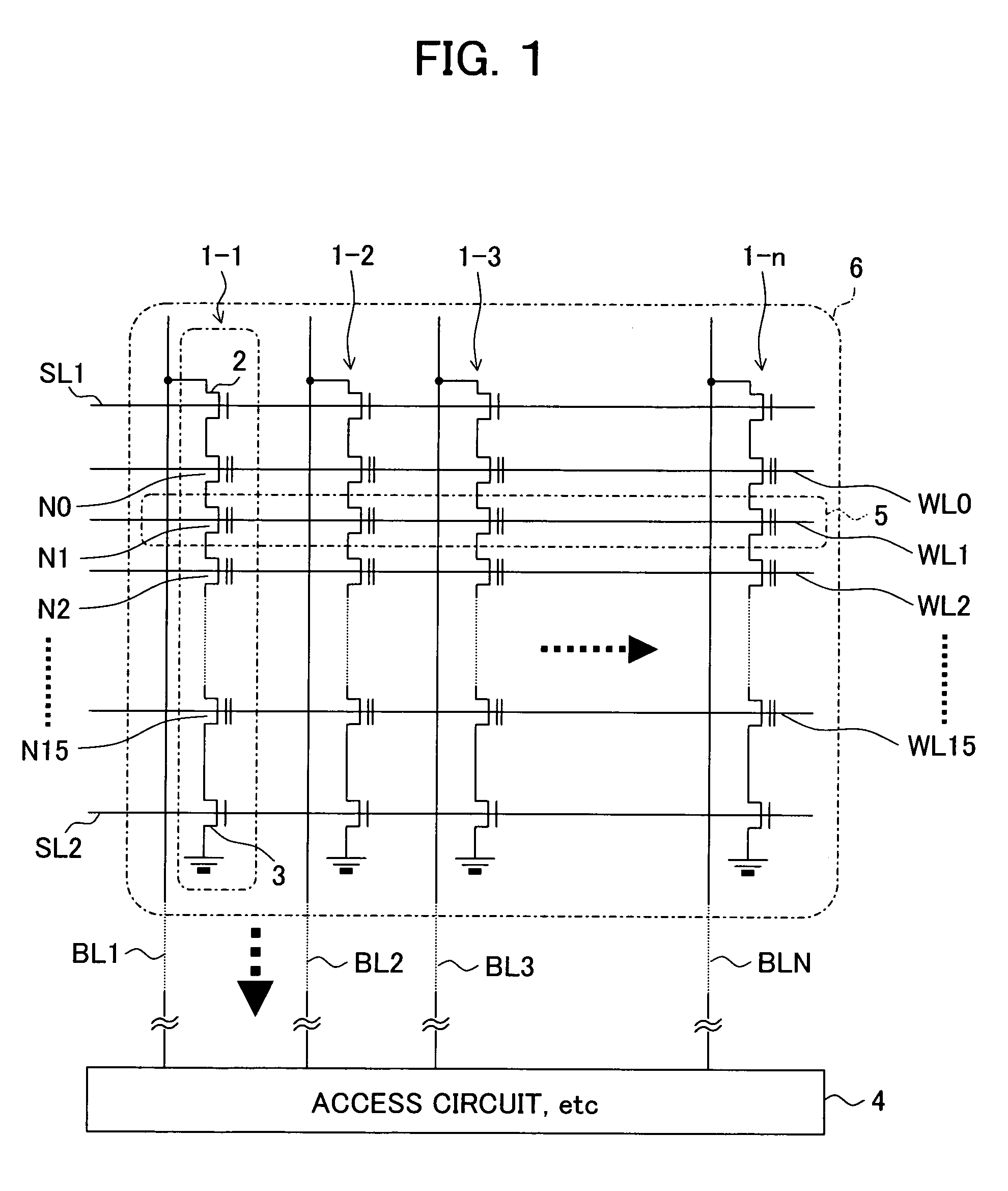Storage device, computer system, and storage system
a storage device and computer system technology, applied in the field of storage devices, computer systems, and storage systems, can solve the problems of long erase time data cannot be overwritten, etc., and achieve the effect of remarkable drop in write efficiency
- Summary
- Abstract
- Description
- Claims
- Application Information
AI Technical Summary
Benefits of technology
Problems solved by technology
Method used
Image
Examples
first embodiment
[0118] Here, the present invention provides the semiconductor memory device employing an additional rewritting type write operation into a flash memory described above with a mechanism for automatically executing the restoration processing of the regions invalidated at the standby time.
[0119] The “standby time” referred here is for example a state after the power of the storage device is turned on, the initialization work ends, and access is possible at any time, but there is no access request from the outside. In actuality, a file storage system such as a hard disk drive is not accessed from the outside all the time. The standby state is rather longer. Alternatively, even in the case where the storage device is seemingly continuously accessed such as when recording a video image, if the average rate of transfer of the data input from the host computer to the storage device is sufficiently smaller than the data transfer capability of the storage device itself, in actuality, the host...
second embodiment
[0156]FIG. 10 is a flow chart for explaining the restoration processing according to the
[0157] In the first embodiment, the restoration processing was automatically executed when the device entered into the standby state, but in the second embodiment, the restoration processing is executed according to a restoration command input from outside of the device. In the figure, the restoration processing ST21 to ST26 of the invalid page regions indicated by a broken line in the figure are the same as the processing (tasks) ST2 to ST7 of FIG. 8 in the first embodiment.
[0158] Further, the second embodiment has a function of interrupting the restoration processing in response to a predetermined command from the user. For example, when it is an access command to the data, the processing for response to the access is carried out, while when it is an command for only interrupting the restoration processing, the device is shifted to the access standby state. The access command, the start comman...
third embodiment
[0173] When the host computer accesses the storage device 110 again and tries to access the data of the same logical address as that stored in the cache memory 117, the data on the cache memory 117 side is accessed. Accordingly, during this period, none of the page buffer 112, internal data bus 113, and NAND type flash memories 115 and 116 is used for access. In the third embodiment, this period is therefore utilized for the restoration processing of invalid page regions.
[0174]FIG. 14 is a flow chart for explaining the restoration processing according to the third embodiment. In the figure, the restoration processing of invalid page regions indicated by the broken line is the same as the processing (tasks) ST2 to ST7 of FIG. 8 in the first embodiment.
[0175] In this example, in the same way as the first embodiment, the restoration processing is automatically executed when the device enters into the standby state, but the time when the restoration processing is interrupted due to an ...
PUM
 Login to View More
Login to View More Abstract
Description
Claims
Application Information
 Login to View More
Login to View More - R&D
- Intellectual Property
- Life Sciences
- Materials
- Tech Scout
- Unparalleled Data Quality
- Higher Quality Content
- 60% Fewer Hallucinations
Browse by: Latest US Patents, China's latest patents, Technical Efficacy Thesaurus, Application Domain, Technology Topic, Popular Technical Reports.
© 2025 PatSnap. All rights reserved.Legal|Privacy policy|Modern Slavery Act Transparency Statement|Sitemap|About US| Contact US: help@patsnap.com



